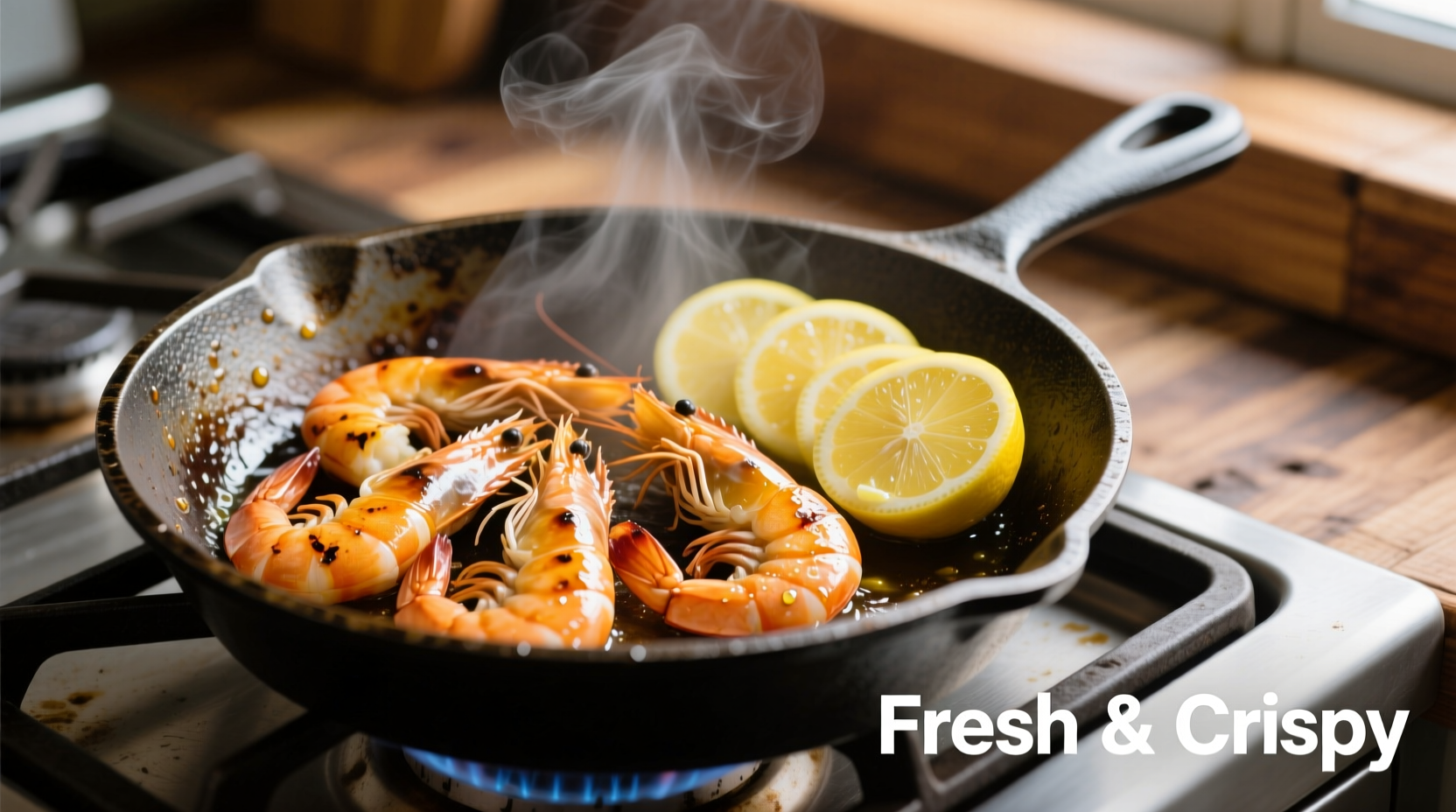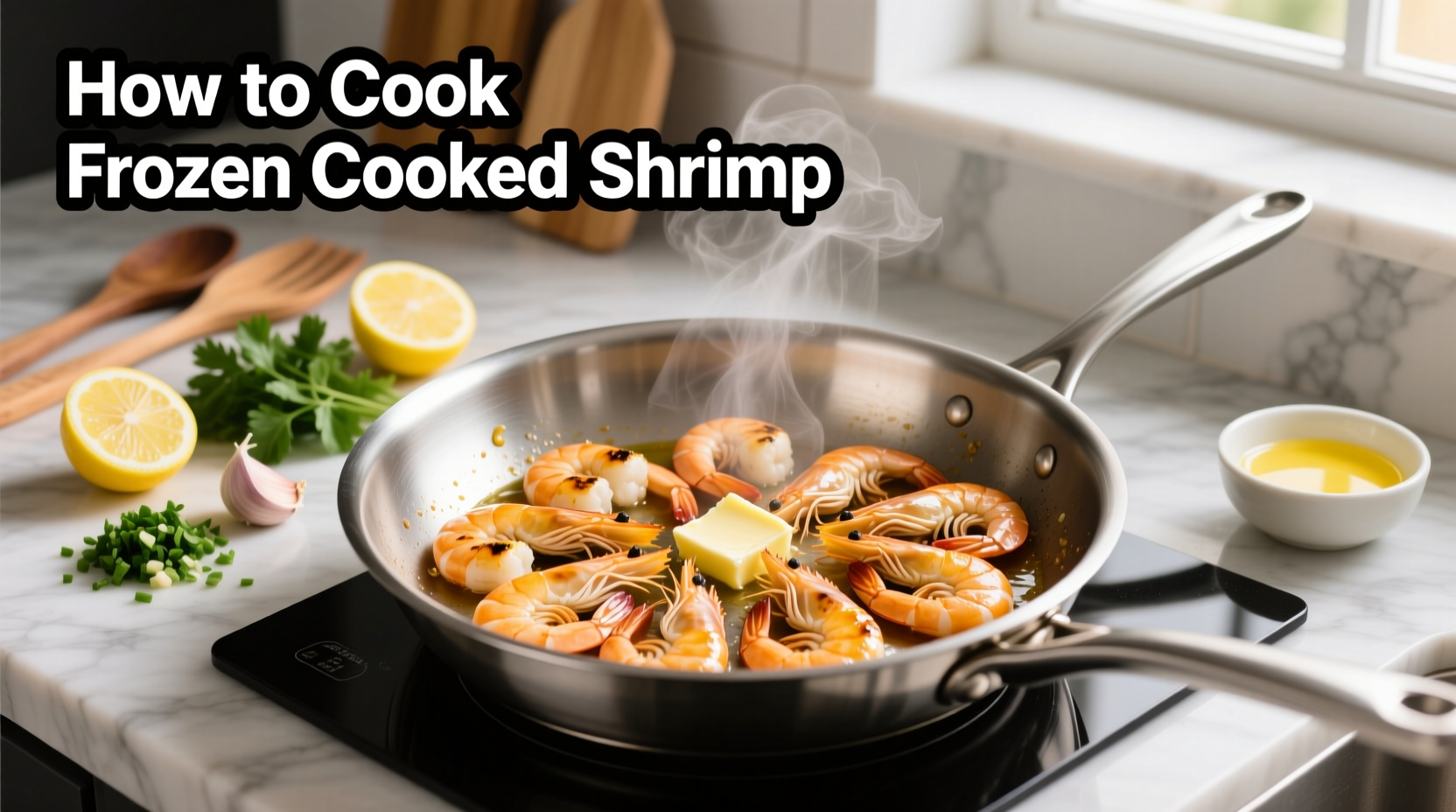Already-cooked frozen shrimp offers incredible convenience for busy weeknights, but improper handling leads to tough, rubbery results. The key insight? You're reheating, not cooking - this distinction prevents the #1 mistake home cooks make. According to USDA Food Safety guidelines, pre-cooked shrimp only needs 2-3 minutes of gentle heat to reach serving temperature while maintaining optimal texture.
Understanding Your Frozen Cooked Shrimp
Unlike raw shrimp that requires thorough cooking, frozen cooked shrimp has already been processed and cooked before freezing. This means your goal is reheating without overcooking - a critical difference that preserves the delicate texture. Most commercial frozen cooked shrimp contains sodium tripolyphosphate (STPP) as a preservative, which helps maintain moisture but can create a slightly rubbery texture if mishandled.
Safe Thawing Methods: What Works Best
While you can cook frozen cooked shrimp directly, proper thawing yields superior results. The FDA recommends these safe methods:
| Thawing Method | Time Required | Texture Result | Food Safety Rating |
|---|---|---|---|
| Refrigerator (24hrs) | 8-12 hours | Best texture retention | ★★★★★ |
| Cold Water Bath | 15-20 minutes | Very good texture | ★★★★☆ |
| Direct Cooking (No Thaw) | 5-7 minutes | Acceptable with technique | ★★★☆☆ |
| Room Temperature | 30+ minutes | Poor texture | ★☆☆☆☆ |
The cold water bath method (placing sealed shrimp in cold running water) provides the best balance of speed and quality for weeknight cooking. Never thaw shrimp at room temperature - this creates dangerous bacterial growth zones between 40°F-140°F as documented by the USDA Food Safety and Inspection Service.
Professional Reheating Techniques
When working with pre-cooked shrimp, less heat equals better results. These methods prevent the protein fibers from tightening and becoming rubbery:
Steaming Method (Best for Texture)
Place shrimp in a steamer basket over simmering water. Cover and steam for 2-3 minutes until heated through. This gentle method preserves moisture while avoiding direct heat contact. For enhanced flavor, add citrus slices or herbs to the steaming water.
Pan-Searing Shortcut
Heat 1 teaspoon of oil in non-stick skillet over medium-low heat. Add shrimp in single layer and cook 1-2 minutes per side. The key is minimal contact time - shrimp should feel warm but still slightly cool in the center when removed from heat, as residual cooking will finish the process.
Direct-from-Frozen Microwave Technique
Place shrimp in microwave-safe dish with 1 tablespoon water. Cover and microwave on 50% power for 90 seconds. Stir gently and check temperature. This method works surprisingly well when you need speed, but requires careful power adjustment to prevent overcooking.

4 Delicious Recipe Variations
Transform your reheated shrimp into complete meals with these chef-approved combinations:
1. Mediterranean Shrimp Salad (5 Minutes)
Toss reheated shrimp with mixed greens, cherry tomatoes, Kalamata olives, red onion, and feta. Dress with lemon-oregano vinaigrette. Ideal for using frozen cooked shrimp without additional cooking.
2. Garlic Butter Shrimp Pasta (10 Minutes)
Sauté minced garlic in butter, add shrimp for 2 minutes, then toss with cooked pasta and fresh parsley. The residual heat from pasta gently warms shrimp without overcooking.
3. Shrimp Fried Rice (12 Minutes)
Add shrimp during the final minute of cooking to prevent rubberiness. Professional chefs always add pre-cooked proteins last in stir-fries to maintain optimal texture.
4. Shrimp Tacos with Avocado Salsa (8 Minutes)
Warm shrimp with taco spices, then serve in corn tortillas with fresh avocado salsa. The cool salsa balances the warm shrimp perfectly.
Critical Mistakes to Avoid
Even experienced cooks make these errors with frozen cooked shrimp:
- Overheating - Shrimp only needs to reach 145°F internal temperature (USDA recommendation)
- Boiling - Submerging in boiling water makes shrimp tough instantly
- Marinating too long - Acidic ingredients (lemon, vinegar) break down proteins
- Cooking from frozen in high-heat methods - Creates uneven texture
Storage Guidelines and Shelf Life
Proper storage maintains quality and safety. According to FDA guidelines:
- Thawed cooked shrimp: 3-4 days in refrigerator (40°F or below)
- Leftover reheated shrimp: 2 days maximum
- Never refreeze thawed cooked shrimp
- Always store in airtight container with paper towel to absorb excess moisture
When reheating leftovers, add a splash of broth or water to restore moisture lost during initial storage. The optimal reheating temperature range is 120°F-140°F - hot enough to be safe but cool enough to prevent further cooking.
When to Avoid Using Frozen Cooked Shrimp
While convenient, frozen cooked shrimp has limitations. Professional chefs recommend using fresh raw shrimp instead when:
- You need precise control over doneness (sushi-grade applications)
- Creating dishes requiring caramelization (like garlic shrimp)
- Using in cold preparations where texture is critical (ceviche)
- When the shrimp shows ice crystals or freezer burn (indicating quality degradation)
For most weeknight meals, however, properly handled frozen cooked shrimp delivers excellent results with minimal effort - making it a pantry staple worth mastering.
Frequently Asked Questions
Can you cook frozen cooked shrimp without thawing?
Yes, but with technique adjustments. Cook frozen cooked shrimp using gentle methods like steaming or low-heat sautéing for 3-4 minutes, turning frequently. Never boil frozen cooked shrimp as this guarantees rubbery texture. The microwave method at 50% power works best for direct-from-frozen reheating.
How do you make frozen cooked shrimp taste fresh?
Revive frozen cooked shrimp by briefly marinating in citrus-free dressing (15 minutes max), then finishing with fresh lemon juice after reheating. Toss with fresh herbs and a drizzle of high-quality olive oil. For best results, incorporate into dishes with vibrant fresh components like avocado, tomatoes, or crisp vegetables that provide contrasting textures.
Why does my reheated shrimp get rubbery?
Rubbery texture occurs when shrimp is overheated, causing proteins to tighten excessively. Pre-cooked shrimp only needs 2-3 minutes of gentle heat to reach serving temperature. The USDA recommends heating to 145°F internal temperature - using a thermometer prevents overcooking. Always remove shrimp from heat source just before reaching target temperature, as residual cooking continues for 30-60 seconds.
What's the best way to store leftover cooked shrimp?
Store cooled shrimp in an airtight container with a paper towel to absorb moisture. Place in coldest part of refrigerator (usually back, bottom shelf). Consume within 2 days for best quality. For optimal reheating, add 1 teaspoon broth when warming and never reheat above 140°F. Never refreeze previously frozen cooked shrimp.











 浙公网安备
33010002000092号
浙公网安备
33010002000092号 浙B2-20120091-4
浙B2-20120091-4